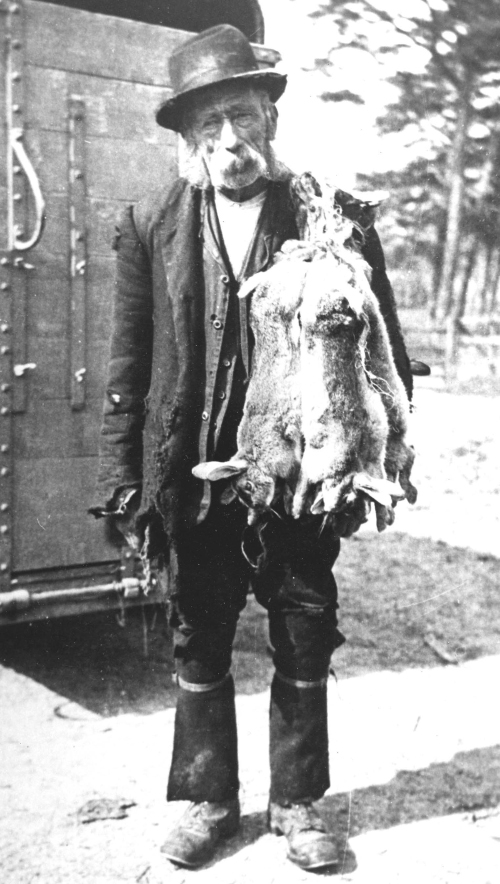
In October and November when the salmon go up to spawn you would see the river under Soar like Piccadily with all the lights, they had cycle lamps or some had bigger ones from motor bikes working with carbide.
I was talking with Morris Jones about the men that worked on the farms and he reckoned that there were over 50 servants on the farms in Talsarnau before the last war and a maid as well. Today there is only a couple. Morris said that the wages then were around a £1.00 a week and your keep for a man with a lot of experience.
The farmers used to help one another then and when the threshing machine went up the hill by Ship Aground they had seven or eight horses to pull it and the men used to shout as they went up and after they had finished in Ty Mawr they would go along to Cefn Trefor and on again to Plas and Ty Newydd. I remember when they were threshing in Ty Mawr a lot of us children were watching, as the stack neared the bottom we were ready with our sticks and a couple of dogs as there was a lot of rats which had been feeding on the corn.
In the Summer we went to the traeth quite often with the 'tryfar' (harpoon) after flat fish, we called this kind of fishing `tryfera' and we would walk down towards Borth y Gest to look for a `llac' (that was the old bed of the river) and the tide would leave fish behind and we would use the tryfar (harpoon) to catch them, but if we could not find a llac, we would go in the river Dwyryd opposite Porthmadog and walk in a straight line across the river and keep on proding. As we went along we knew that the fish were moving as we could see bubbles coming to the top as we fought our way against the current, and often walking and swimming when it was too deep. They would suddenly stop if there was a point turning out of the river and that would sometimes be very shallow and you could hardly move without a flatfish under your feet. I can say that I've caught thousands like that in my time.
The men went in the water in an old suit and of course after being in the water there was a lot of weight to carry. There were no plastic bags then and we had a thick fence wire over our shoulders with a kind of a hook each end to put the fish on and they were hanging down to your heels. The other way of fishing was to set long lines on the sand with two pegs but we had to be down early in the morning after the tide had cleared, or the birds would have them, especially if there was a bass on it. Hugh Owen Hughes, an old sailor from Bryn Street, always had an old hat on and when he went in the water with his harpoon he kept his tobacco under his hat in case he would step in one of the deep pools that are in the Dwyryd.
When Motor Bikes came on the market, Morgan Price, Tynbwlch had a B.S.A., Edward Roberts, Plas had a Triumph, Willie Williams, Crydd had a W. E. Lloyd, Griffith Davy, Felin Rhyd Fawr had a Sparbrook, J. F. Roberts had a Wesland. I think they were the first bikes in Talsarnau.
It was a good day out to go for cockles on a nice summer day, but to carry them back was hard work and still is as the cockle bed is between Borth y Gest and Trwyn Glanmor. But the old people were wiser than us; they would go early in the morning, walk across the traeth then they would pick the cockles and take them to a little stream near the rocks, wash them, then boil the lot and leave the shells behind and that made their load so much lighter and of course they had a picnic with the children and they enjoyed themselves so much that they looked forward to going again. That was part of their holiday. They boiled the water in a little kettle to make tea and had the firewood on the high tide mark. I very often think what Talsarnau was like at the beginning of the last century as there is only Cefntrefor Fawr and Cefntrefor Bach on the map, Draenogau and Penbryn and the old place where the new Caerffynnon was built but where was the `Talysarnau'. Some people think it was where the Ship Aground is, or could it have been where Caerffynnon is now as it must have been a farm?


